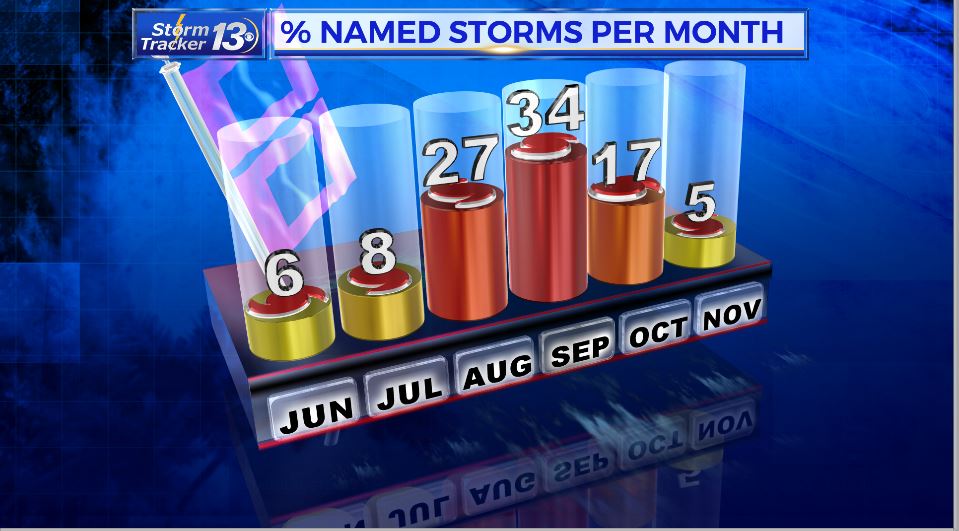The official start to the Atlantic basin hurricane season is June 1 (today!) and goes through November 30. The “Atlantic basin” includes the Atlantic Ocean, Gulf of Mexico, and Caribbean Sea. The beginning and end of the season are statistically relatively quiet compared to the middle of the season. Based on hurricane climatology data from 1966-2009, a breakdown of percentage of named storms per month during hurricane season was computed.

You can see in this graphic how different the beginning and end of the hurricane season are compared to the middle. Only 6% of all named storms during a season form in June, 8% in July, and 5% in November. The bulk of named storms form between August and October, with September the clear peak month at 34%!
Adding up all of these numbers only gives a total of 97%. What happened to the other 3% to total 100%? The answer-tropical cyclones that form outside of hurricane season! Those would be systems like Tropical Storm Alex (13 Jan. 2016), Tropical Storm Ana (8 May 2015), Hurricane Lili (12 Dec. 1984), Tropical Storm Beryl (26 May 2012), and Tropical Storm Zeta (30 Dec. 2005).
While climatology dictates tropical cyclones are statistically more likely to form during the months of August through October, this shows there is potential, given the right atmospheric conditions, for a tropical cyclone to form during any month of the year. Of course, those storms forming in December and January are unlikely! But still possible.
Historically, September and October are the months here in the Carolinas where tropical cyclones are most likely to make landfall.



